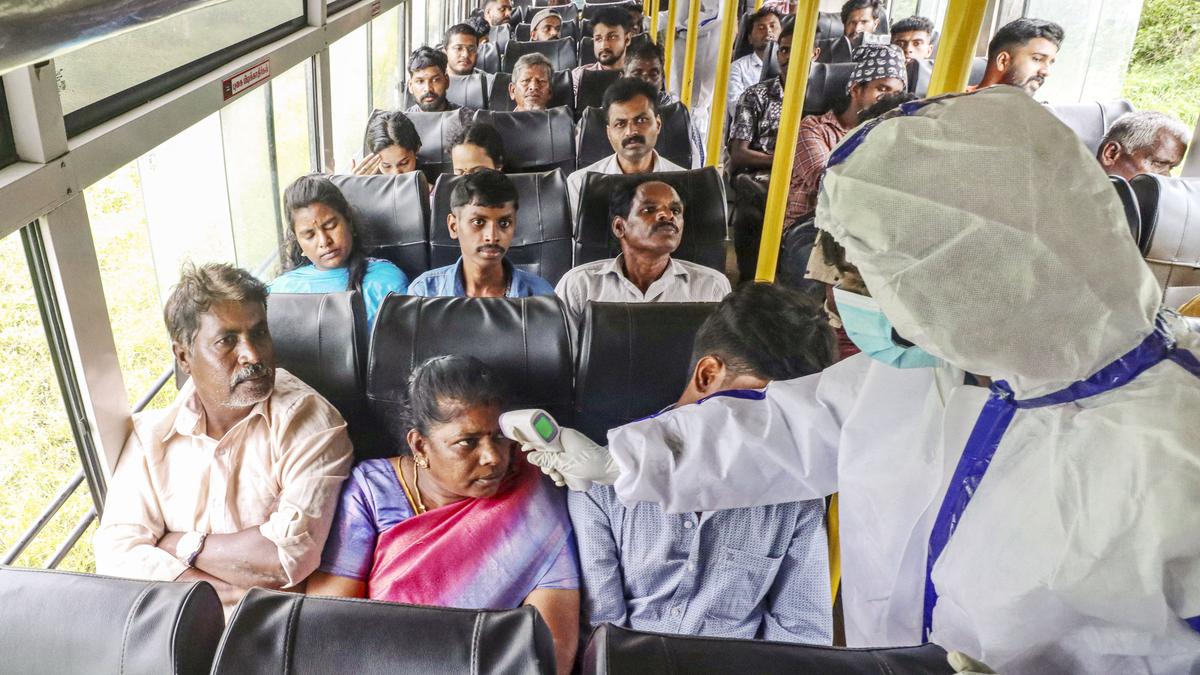Hepatitis A outbreaks in Malappuram, Kozhikode and Ernakulam districts which began months ago are continuing unabated with new cases being reported. (image for representation)
| Photo Credit: PTI
While the Nipah outbreak in Malappuram and the landslides in Wayanad seemed to preoccupy the attention of the State administration all of July and August, infectious diseases have been soaring in Kerala.
And this year (2024), not just vector-borne diseases, water-borne diseases, especially hepatitis A and cholera, have also been spreading in many districts.
Hepatitis A outbreaks in Malappuram, Kozhikode and Ernakulam districts which began months ago are continuing unabated with new cases being reported on a daily basis. Hepatitis A is linked to poor water quality and contaminated food and this year seems to have been the worst for Kerala.
Since the past two decades, Kerala has been experiencing several large and small hepatitis A outbreaks, along with several fatalities, throughout the year in all districts. The number of probable or epidemiologically-linked-but-not-confirmed cases are at least double the number of confirmed cases every year.
In 2024, Kerala reported 1,073 confirmed cases of Hepatitis A. In 2022, the number of confirmed cases was 231 and probable cases were 894. There were just two confirmed deaths.
In 2024, however, explosive outbreaks were reported from several districts, including Ernakulam, Malappuram, Kannur and Thrissur, even before the monsoon.
As on August 21, 2024, Kerala has reported 4,306 confirmed cases of hepatitis A and 12,958 probable hepatitis A cases. There have been 54 suspected and 41 confirmed hepatitis A deaths. Hundreds of adults who contracted hepatitis A have had to spend thousands of rupees on medical care and continue to suffer from various morbidities.
Previous studies done in Kerala have reported that the average out-of-pocket expenditure incurred by a family when one adult member is infected by hepatitis A is nearly ₹25,000.
Safe drinking water
It is quite appalling that a State which claims to be the best in public health, with several national awards to substantiate that claim, has been paying so little attention to providing one of the basic social determinants of health, which is safe drinking water.
While it is true that provision of safe drinking water is not the Health department’s responsibility, local self-governments or the Kerala Water Authority (KWA) too have not been paying adequate attention to this. Almost all outbreaks have been in the rural areas and linked to the local source of drinking water, including wells and regional water supply schemes.
Dengue, leptospirosis cases
Kerala was bracing for an explosive dengue outbreak this year, going by the pattern of disease transmission early in the year. However, the Statewide heavy rainfall has somewhat moderated the outbreak. Even so, as on August 21, the State has reported 13,948 confirmed cases and 37,735 probable cases of dengue. However, dengue mortality has been high this year, with 54 confirmed deaths and 40 probable dengue deaths so far.
The annual burden of leptospirosis cases and mortality in Kerala has been steadily rising over the years and this year, as on August 21, Kerala has reported 1,916 confirmed and 1,565 probable leptospirosis cases. There have been 120 confirmed and 102 probable leptospirosis deaths so far.
The case graph does not show any signs of going down even though public health experts say the peak will be over in another month. The complexities of changing weather patterns and environmental issues could be complicating the incidences of leptospirosis, which has always had a steady pattern of incidence in Kerala.
The State has been battling annual episodes of dengue and leptospirosis epidemics since the past several decades and the focus in recent years has been solely on reducing mortality. However, failure to diagnose early, atypical presentations of infections and inadequacies in public sector hospitals to deal with the acute complications of dengue and leptospirosis seem to be defeating this goal.
